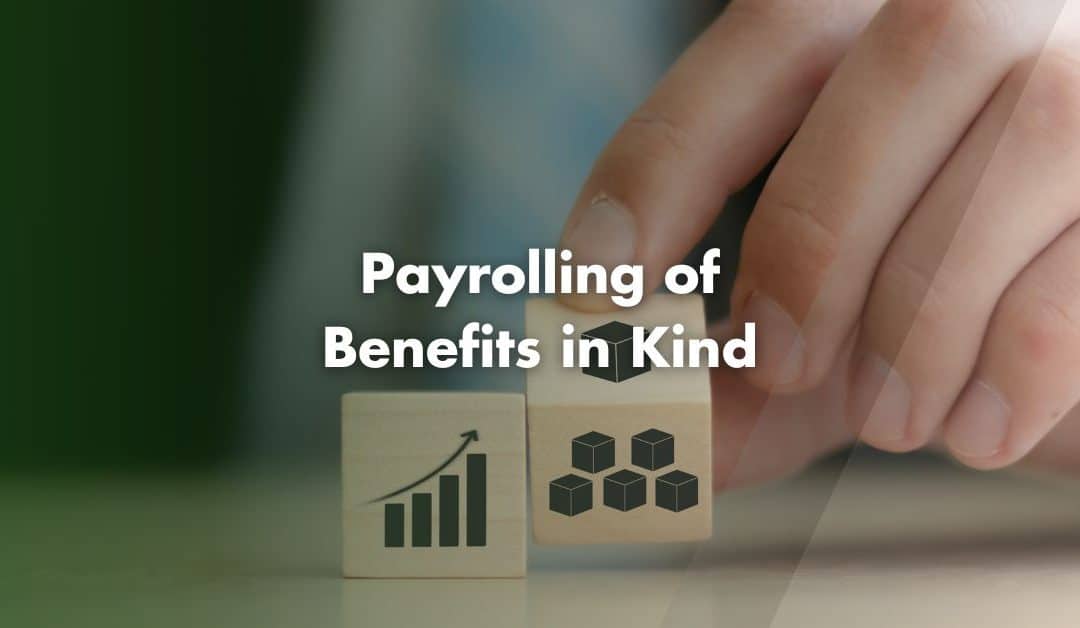From April 2027, you will need to tax most employee perks – known as Benefits In Kind – through payroll instead of annual forms. Payrolling Benefits In Kind involves adding the value of employee perks to payroll calculations. Instead, of reporting benefits once a year, employers will divide the value of each benefit across the tax year and deduct tax in each pay period.
For example: If private medical insurance costs £600 per year and the employee is paid monthly, £50 is added to their monthly taxable income. This helps employees avoid unexpected tax bills and ensures they pay the right amount of tax throughout the year.
What are Benefits In Kind?
Benefits In Kind are non-cash perks that employers provide for employee’s personal use. These benefits come in various forms, such as:
- Company cars
- Private medical insurance
- Mobile phone allowances
- Gym memberships
- Childcare support
Currently, you must typically report these benefits via a P11D at the end of the tax year. Starting in April 2027, however, their value will need to be taxed through payroll in real-time.
Changes to Payrolling Benefits In Kind from 2027
From April 2027, payrolling of most Benefits In Kind will become mandatory. Employers will need to:
- Report Benefits In Kind using Full Payment Submission (FPS) via Real-Time Information (RTI)
- Stop submitting P11D forms for Benefits In Kind you are payrolling
- Continue submitting a P11D(b) form and paying Class 1A National Insurance Contributions
- Provide employees with a summary of received Benefits In Kind by 1st June following the tax year
Some benefits, such as employer-provided accommodation or low-interest loans, can remain outside of mandatory payrolling. You can still report these using a P11D or adding it to the payroll voluntarily.
Mandatory payrolling of Benefits In Kind should make the tax system fairer and more efficient. When benefits are taxed in real-time, employees pay the correct amount of tax throughout the year. This reduces underpayments and errors linked to tax code adjustments.
For employers, it also means less paperwork at the end of the tax year and fewer opportunities for filing errors.
How Employers Should Handle Payrolling Benefits
Although the rules come into force in April 2027, employers can start preparing now. Voluntary payrolling is already available. To get ready:
- Register online using HMRC’s online payrolling service before the tax year begins
- Check which benefits are eligible and identify any exceptions
- Clearly explain to employees which benefits you are going to be payrolling and how this affects their payslips and tax codes
- You will still need to file P11D(b) and pay Class 1A National Insurance Contributions
- Train payroll and HR staff teams so they understand how to calculate and process Benefits In Kind via payrolling
Employers wishing to opt into voluntary payrolling for the 2026/27 tax year must register before 6th April 2026. After this date, the voluntary registration service will be closed in preparation for the mandatory implementation in 2027.
How to Calculate Benefits
Divide the value of each benefit by the number of pay periods in the year:
- Divide by 12 for monthly pay
- Divide by 52 for weekly pay
- Divide by 13 for 4-weekly pay
If a benefit starts partway through the year, divide its value over the remaining pay periods. If the benefit’s value changes, adjust future payments accordingly. Estimates are acceptable if the final cost is unknown early in the year.
What if Employees Pay Towards their Benefits?
When employees contribute to the cost of a benefit, the taxable amount is less. This contribution must be made by 6th July after the tax year ends. If not, the full benefit value is taxable and subject to National Insurance.
Employers must provide a written summary of an employee’s Benefits In Kind to them each year. Employers must share this by 1st June and should include:
- Details of each benefit that you are payrolling
- The value of these benefits
- Any benefits that you are not payrolling
You can send this information via payslip, letter or email. There is no standard format, but the information should be clear.
The 50% Rule
HMRC rules prevent employers from deducting more than 50% of an employee’s salary in tax. If taxing a benefit would breach this limit, employers must either:
- Carry forward the unpaid tax to future pay periods
- Revert to reporting the benefit using a P11D
From April 2027, carrying forward unpaid tax becomes the standard method.
Payrolling Benefits Alongside Low Income and Irregular Pay
Employees on statutory payments, such as sick or maternity pay, may not earn enough to cover Benefit In Kind taxes. In such cases, the employer should carry forward the unpaid tax.
If an employee stops receiving income, employers should still report any benefits on the Full Payment Submission. HMRC will collect the tax after the tax year ends.
Contact Us
We are not just accountants; we are Chartered Accountants with one of the most reputable and premium accounting bodies. We are registered and regulated by ACCA; so you can rest assured that you are in good hands. Knowing this, don’t hesitate to get in touch with us if you require assistance: Pi Accountancy | Contact Us
This article is for general informational purposes only and does not constitute legal or financial advice. While we aim to keep our content up to date and accurate, UK tax laws and regulations are subject to change. Please speak to an accountant or tax professional for advice tailored to your individual circumstances. Pi Accountancy accepts no responsibility for any issues arising from reliance on the information provided.

